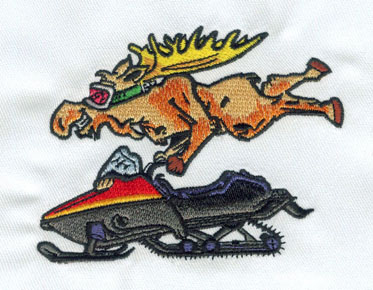The Art of Thread Painting: Bringing Life to Fabric with Needle and Thread
Thread painting, also known as thread sketching or free-motion embroidery, is a captivating art form that allows artists to create stunning textile masterpieces using just a needle and thread. This technique involves "painting" with thread to add depth, dimension, and texture to the fabric, resulting in lifelike images and intricate designs. In this blog post, we'll explore the fascinating world of thread painting, from its history and techniques to tips for getting started and inspiring examples of this versatile art form.
The History of Thread Painting
Thread painting has its roots in traditional embroidery techniques, but it has evolved into a distinct art form in its own right. Historically, embroidery was used to embellish textiles and garments with decorative stitches and motifs. However, as artists began to experiment with new materials and techniques, embroidery evolved into a medium for creating intricate and lifelike images. Thread painting emerged as a way to mimic the brushstrokes of painting using needle and thread, allowing artists to capture the essence of their subjects with remarkable detail and realism.
Techniques and Materials
Thread painting can be done using a variety of
techniques and materials, but the basic process involves stitching layers of
thread onto fabric to create shading, highlights, and texture. Here are some
common techniques and materials used in thread painting:
● Free-Motion Embroidery: This technique involves stitching with a sewing machine that has a
darning or free-motion foot, allowing the artist to move the fabric freely
under the needle.
● Hand Embroidery: Thread painting can also be done by hand using a needle and thread.
Artists use different embroidery stitches, such
as satin stitch, long and short stitch, and French knots, to build up layers of
color and texture.
● Thread Selection: Choosing the right thread is essential for achieving the desired
effect in thread painting. Artists often use a combination of thread weights,
colors, and textures to create depth and dimension in their work. Silk, cotton,
and rayon threads are commonly used for their sheen and versatility.
● Fabric Selection: The choice of fabric can also impact the outcome of thread painting.
Smooth, tightly woven fabrics, such as cotton or silk, are ideal for detailed
work, while textured fabrics can add interest and dimension to the finished
piece.
Getting Started with Thread
Painting
If you're interested in trying your hand at
thread painting, here are some tips to help you get started:
● Start with a simple design: Choose a subject with clear lines and shapes, such as a flower,
animal, or landscape, to practice your thread painting skills.
● Experiment with different
stitches: Explore various embroidery stitches and
techniques to create different effects and textures in your work.
● Practice, practice, practice: Like any art form, thread painting takes time and practice to master.
Start with small projects and gradually work your way up to more complex
designs as you gain confidence and skill.
● Study the work of other
artists: Look for inspiration in the work of other
thread painters and embroidery artists. Study their techniques, color choices,
and compositions to learn from their expertise and incorporate new ideas into
your work.
Inspiring Examples of Thread
Painting
Thread painting has been used to create a wide
range of stunning artworks, from realistic portraits and landscapes to abstract
and experimental pieces. Here are some examples of thread painting to inspire
your own creative endeavors:
● Realistic Portraits: Thread painters can capture the likeness and personality of their
subjects with remarkable accuracy, using layers of thread to create subtle
shading and detail.
● Nature Scenes: Thread painting is often used to depict the beauty of the natural
world, from lush forests and serene lakes to vibrant flowers and exotic
wildlife.
● Abstract Art: Some thread painters take a more experimental approach, using thread to create abstract compositions and explore texture, color, and form in new and unexpected ways.
Conclusion
Thread painting is a captivating art form that offers endless possibilities for
creativity and self-expression. Whether you're a seasoned artist or a beginner,
thread painting provides a unique opportunity to explore the intersection of
embroidery, painting, and textile art. With its rich history, versatile
techniques, and stunning results, thread painting continues to inspire and
delight artists and enthusiasts around the world. So grab your needle and
thread, and let your imagination take flight as you embark on your own thread
painting journey.


